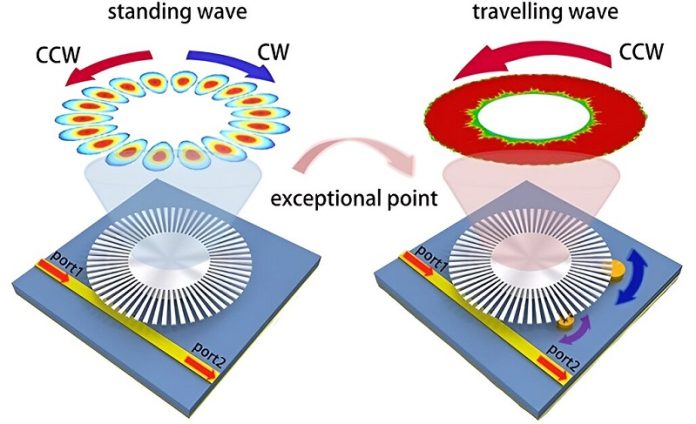
Recent advancements in sensor technology have pushed the limits of what can be detected, thanks to breakthroughs in photonics and materials science.
One exciting area of research is non-Hermitian physics, which explores new ways to control light and improve sensor sensitivity.
A study published in Advanced Photonics Nexus reveals a groundbreaking development in this field: a reconfigurable sensor that can detect particles as small as 0.001 times the wavelength of light.
This new sensor is based on a concept known as exceptional points (EPs), which are special conditions in a system where certain properties merge, significantly boosting the sensitivity of optical sensors.
The study introduces a sensor that uses a single spoof localized surface plasmon (LSP) resonator, making it highly sensitive and adaptable.
Traditional sensors that use EPs, like whispering gallery mode (WGM) microtoroids, have shown improved sensitivity compared to conventional sensors. However, these traditional EP-based sensors have limitations. Once they are made, their EPs are fixed, making adjustments difficult.
Additionally, they usually work within a narrow frequency range, which limits their ability to detect very small particles due to constraints in how they handle changes and how efficiently they can be excited.
The new sensor design overcomes these challenges by incorporating spoof LSP resonators, which mimic the behavior of localized surface plasmons. These resonators offer greater flexibility and are more adaptable. The sensor setup includes a microstrip line with two movable Rayleigh scatterers suspended above it, allowing the EP states to be dynamically reconfigured across a wide frequency range. This reconfigurability makes the sensor more reliable, even with small imperfections during fabrication, and significantly enhances its ability to detect extremely small particles.
Some of the key features of this innovative sensor include:
- Reconfigurability: The movable Rayleigh scatterers allow for the dynamic formation and adjustment of EPs, which improves the sensor’s accuracy and versatility.
- Enhanced Sensitivity: By confining electromagnetic fields to the surface of the resonator, the sensor becomes much more sensitive to tiny changes caused by surrounding particles.
- Broad Detection Range: The sensor supports various plasmonic resonance modes, which broadens its operational bandwidth and increases its detection range.
This advancement in sensor technology marks a significant leap forward, providing exceptional sensitivity that allows for the detection of particles as tiny as 0.001 times the wavelength of light.
This breakthrough opens up new possibilities for applications in both scientific research and industry, where detecting such small particles is crucial.
Whether it’s in medical diagnostics, environmental monitoring, or materials science, this reconfigurable sensor could lead to more precise and effective solutions.



